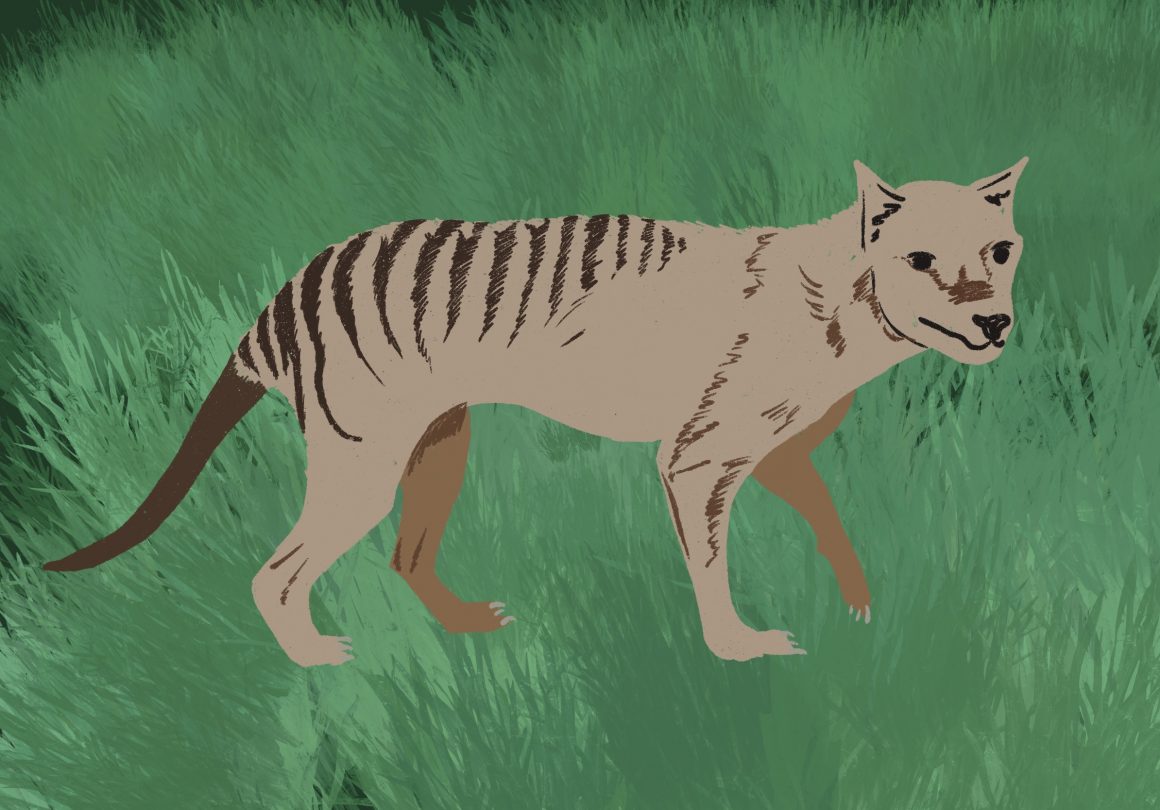
De-extinction efforts with the long-gone Tasmanian tiger
By Sheroog Kubur, September 28 2022—
Humans have been responsible for damage to the planet, but one of the most well-known examples remains the Tasmanian tiger. The name is misleading, as it is actually a dog-like marsupial that went extinct in captivity in 1936. The animal was accused of preying on the sheep and other small animals of Australian settlers in the 1800s and 1900s, until a bounty was set up to collect their fur and eradicate the species. It was officially declared extinct in 1986. Thylacines may be making a comeback due to the de-extinction initiative of Texas-based biotechnology company, Colossal Biosciences.
The thylacine remains, while misunderstood, one of the most fascinating marsupials. It was known for its stripes and unique pouch that was present in both males and females. While it resembles the dingo and has been referred to as a “dingo with a pouch,” the animal is closer to kangaroos. It was also the apex predator of Tasmania, meaning that its extinction has long-lasting effects on the existing species of the region. By reintroducing the animal, it could reintroduce balance by picking off weaker animals that are more susceptible to transmitting diseases.
The animal went extinct on mainland Australia 3,000 years ago, around the same time dingoes appeared on the mainland. From then to their extinction, thylacines were restricted to Tasmania. In 2017, University of Melbourne researcher Andrew Pask completely sequenced the remaining DNA of the last thylacine. This research revealed that they suffer from a lack of genetic diversity, meaning that they are more vulnerable to diseases regardless of their extinction.
The plan for the de-extinction project is to create a hybrid animal with the characteristics of the thylacine. It will use CRISPR gene editing technology to combine bits of thylacine DNA with that of the Dasyurid — a family of marsupials that are the closest to the thylacine. This will then create an egg that can be placed into a surrogate.
However, the dilemma of reintroduction and de-extinction remains a hot topic. Critics are concerned that this process may encourage funding to be funneled into de-extinction over conservation, such as preventing animals from going extinct in the first place. American biologist Beth Shapiro suggests that, while this technology is supporting ecosystems, the attention should be redirected to conservation efforts of animals who are struggling.
“Maybe we could use this technology to give those populations a little bit of a genetic booster shot and maybe a fighting a chance against the diseases that are killing them,” Shapiro said in 2017.
Other critics emphasize the importance of consulting Indigenous peoples in Tasmania and surrounding regions regarding the reintroduction of the predator. There also remains the question of the welfare of the animals who would be used as surrogates and hosts for the hybrid embryo.
Pask established the Thylacine Integrated Genetic Restoration Research Lab in March with a $5 million AUD donation and support from Colossal Biosciences. Colossal also intends to carry on this initiative with the wooly mammoth, in which the company has already completely sequenced the genome of Asian and African elephants to do so.
